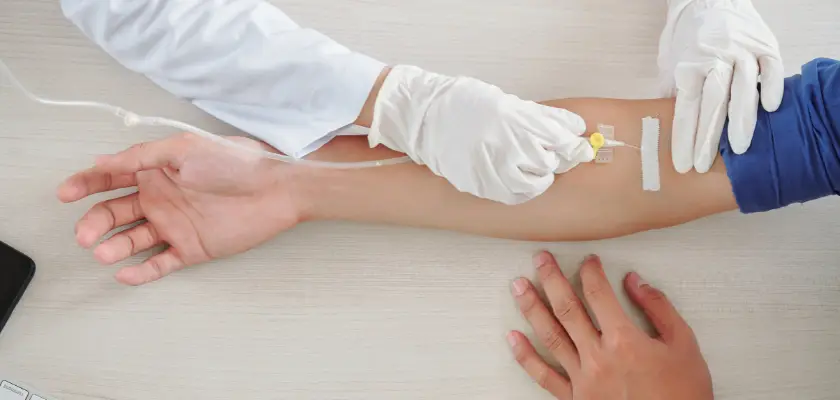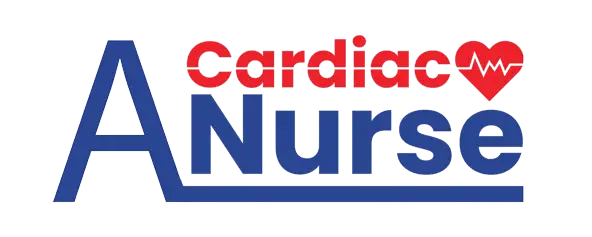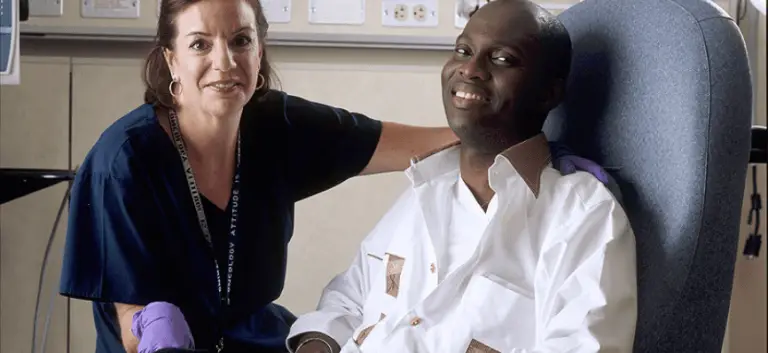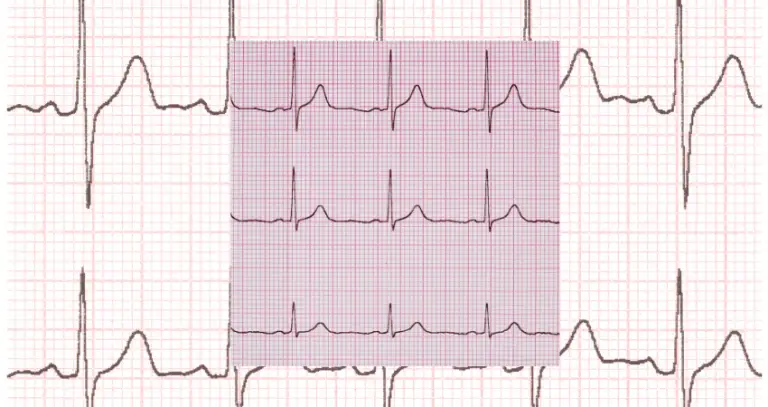Why do Veins Roll: Tips For Nurses

Why Do Veins Roll?
Veins rolling or moving under the skin when a needle is inserted is a common issue faced during blood draws or intravenous (IV) therapy.
Let’s dive deeper into the reasons why veins roll and the factors that contribute to this phenomenon.
Veins Aren’t Anchored Like Arteries
Unlike arteries, which are deeper and more firmly anchored in place, veins are closer to the surface of the skin and have less structural support.
Arteries need to be stable because they transport blood under high pressure. Veins, on the other hand, carry blood at a lower pressure and don’t require such rigid anchoring.
The Role of Surrounding Tissue
The tissue that surrounds veins is often softer and more flexible. This makes it easier for the veins to move around when touched or pressed.
So, if you press a needle against a vein, it can easily slide to one side instead of staying put.

Natural Movement and Flexibility
Veins have a natural degree of flexibility to accommodate the changing volume of blood flow. This is useful for bodily functions but can become an issue when trying to insert a needle.
Individual Differences
It’s important to note that everyone’s veins are a bit different. Some people naturally have more stable veins, while others have veins that are more prone to rolling.
Factors like age, hydration levels, and even temperature can also influence how much a vein moves.
By understanding these aspects, it becomes easier to take measures to mitigate the problem of rolling veins during medical procedures.
Symptoms of Rolling Veins
Recognizing the symptoms of rolling veins can help both healthcare providers and patients understand what’s happening during procedures like blood draws or IV insertions. Here’s a deeper look at the common signs that indicate a vein might be rolling.
Needle Slides Off the Vein
- Feeling of Resistance: When trying to insert the needle, the healthcare provider might feel a resistance or slipping sensation, indicating that the needle is not entering the vein as it should.
- Unsuccessful Draw: If it’s a blood draw, failing to get a blood return is a sign that the needle has slipped off.
- Patient Feedback: The patient might feel an unusual shifting or sliding feeling at the needle site, rather than the typical ‘pinch’ of a successful needle insertion.

Multiple Attempts Needed
- Repeated Insertions: If the healthcare provider has to try more than once or twice to successfully insert the needle, this is a strong sign that the veins are rolling.
- Increasing Discomfort: Multiple attempts generally increase the patient’s level of discomfort and anxiety, making it even more challenging to secure the vein.
- Time-Consuming: Procedures that should be quick can end up taking a lot longer when multiple attempts are needed, causing inconvenience to both patient and healthcare provider.
Temporary Swelling or Bruising at the Site
- Immediate Swelling: After an unsuccessful needle insertion, there might be a bump or swelling at the site where the needle was attempted. This is due to the needle puncturing the tissue surrounding the vein instead of entering the vein itself.
- Bruising: Bruises can appear either immediately or a few hours after the procedure. This happens when blood leaks from the punctured vein into surrounding tissue.
- Pain and Sensitivity: The site of the attempted needle insertion may be tender to the touch for a few hours or even days, depending on the severity of the bruising and swelling.
By recognizing these symptoms early, healthcare providers can take corrective actions more quickly, thereby making the experience less stressful for both them and the patient.
Causes of Rolling Veins
Understanding why veins roll can be beneficial for both healthcare providers and patients. Below are more detailed explanations of the common factors that contribute to rolling veins.
Dehydration: Veins Become Less Prominent
When you’re dehydrated, your body doesn’t have as much fluid available to fill the veins. This makes them less visible and flatter against the skin, making it harder for a needle to puncture them successfully.
Age: Older Individuals Have More Fragile Veins
As we age, our skin and blood vessels lose elasticity. This makes older individuals more susceptible to rolling veins. Additionally, the walls of the veins may become thinner and less sturdy, causing them to shift position more easily when touched by a needle.
Lack of Muscle: Veins Can Slide More Easily
Muscle tissue helps keep veins in place. When there is less muscle mass, veins have more room to move around. This is especially common in very young patients or those who have lost muscle mass due to illness or age.

Skill of the Person: Proficiency Matters
The experience and technique of the healthcare provider can also play a role in whether veins roll. Proper needle placement, angle of insertion, and steadiness of hand are all skills that can impact the procedure’s success.
- Inexperience: Less experienced healthcare providers may not have developed the skill to handle rolling veins effectively.
- Technique: Using an improper technique can also lead to vein rolling. For example, entering the skin at the wrong angle can push the vein to the side instead of puncturing it.
By comprehending these causes in depth, healthcare providers can take appropriate steps to minimize the likelihood of veins rolling during medical procedures. It also helps patients understand why multiple attempts may be necessary for successful needle insertion.
Treatment Options for Managing Rolling Veins
Effective treatment strategies can go a long way in making procedures like blood draws or IV insertions smoother when rolling veins are involved. Here are expanded details on some of the treatments to counteract the issue.
Hydration: More Fluids for Better Visibility
Drinking plenty of fluids before the procedure helps expand your veins, making them easier to see and stick. It’s often recommended to consume water several hours before your appointment, as proper hydration can take time to affect your veins.
Warm Compress: Elevate Vein Proximity to Skin Surface
Applying a warm compress to the area where the needle will be inserted dilates the veins, making them more visible and accessible. This is particularly helpful in cooler environments, where veins tend to contract and become less visible. The warmth not only expands the veins but also relaxes the surrounding muscle and tissue, making the entire process easier.

Proper Technique: Importance of Right Needle and Angle
The skill of the healthcare provider comes into play here. Using a needle that is the appropriate size for the vein and for the procedure at hand is critical. For smaller veins, a smaller gauge needle is generally more effective.
- Angle of Insertion: A shallow angle is usually better for veins that are close to the surface, while a steeper angle might be needed for deeper veins.
- Steady Hands: Having a steady hand can greatly reduce the likelihood of a vein rolling upon needle contact.
By employing these treatment strategies, healthcare providers can make the needle insertion process far more comfortable for patients, while also minimizing the risk of complications like bruising or infection.
Patients can also proactively engage in some of these treatments, like hydration, to help ensure a smoother procedure.
Why do Veins Roll: Tips for Nurses
Handling rolling veins can be tricky, but these tips can make it easier for nurses to manage the situation and ensure patient comfort.
Stay Calm: Keep Yourself and the Patient Calm
- Speak Softly: A soft, comforting voice can relax the patient.
- Deep Breaths: Encourage the patient to take deep breaths, and do the same yourself. This helps lower stress for both parties.
- Be Confident: If you appear confident, the patient will likely feel more at ease.
Use the Right Equipment: Choose the Right Size Needle
- Know Your Options: Different sizes of needles are available. The smaller the gauge, the larger the needle.
- Check the Vein Size: If the vein is small, use a smaller gauge needle.
- Fresh Supplies: Always use new, sterilized equipment to minimize infection risk.
Try a Different Spot: Sometimes Switching to Another Vein Works Better
- Examine Other Areas: If one vein isn’t working, look at other potential sites like the other arm or the back of the hand.
- Use a Tourniquet: This can help make other veins more visible.
- Patient’s Comfort: Always ask the patient for their preference when selecting a new site.
Get Assistance: If You’re Having Difficulty, Don’t Hesitate to Ask a Colleague for Help
- Two Heads are Better: Sometimes another nurse can see something you missed.
- Swap Roles: Let another nurse try if you’ve made multiple unsuccessful attempts. This is for the comfort and safety of the patient.
- Learning Opportunity: Use this as a chance to observe and learn new techniques from colleagues.
By understanding why veins roll and using these tips, nurses can better manage the situation. This makes the experience better for the patient and less stressful for the healthcare provider.
Related Articles
What does WHOL stand for in patient chart?
Nursing diagnosis for heart failure
Nursing diagnosis for Parkinson’s disease
Nursing diagnosis for amyotrophic lateral sclerosis
Phyllis Robinson MSN, RN is a Registered Nurse of 27 years. Phyllis is passionate about the prevention and healing of heart disease using traditional and alternative methods. She has experience in emergency room, telemetry, infusion, and critical care. Phyllis currently practices in an intensive care unit.






